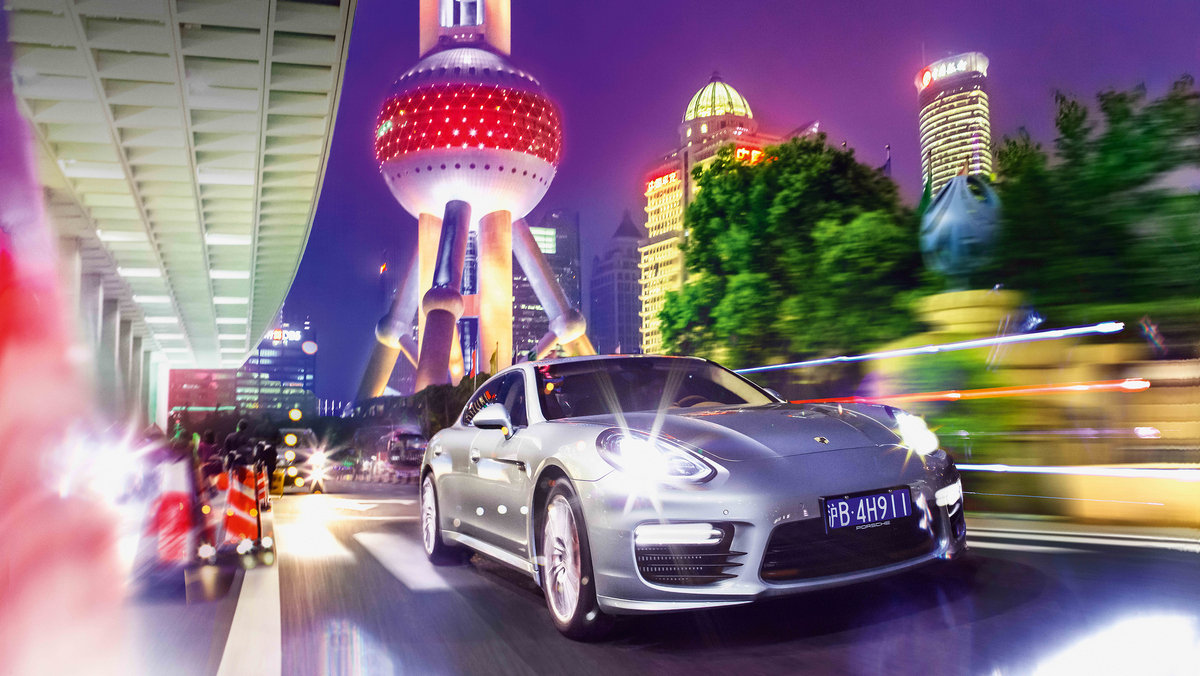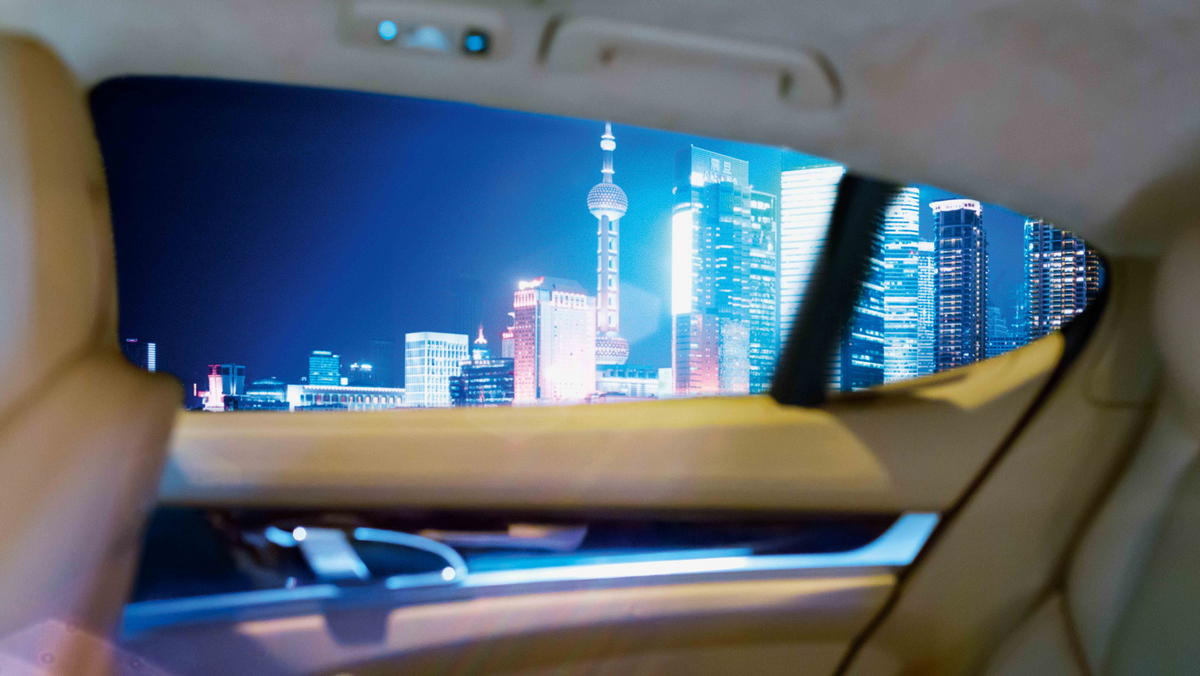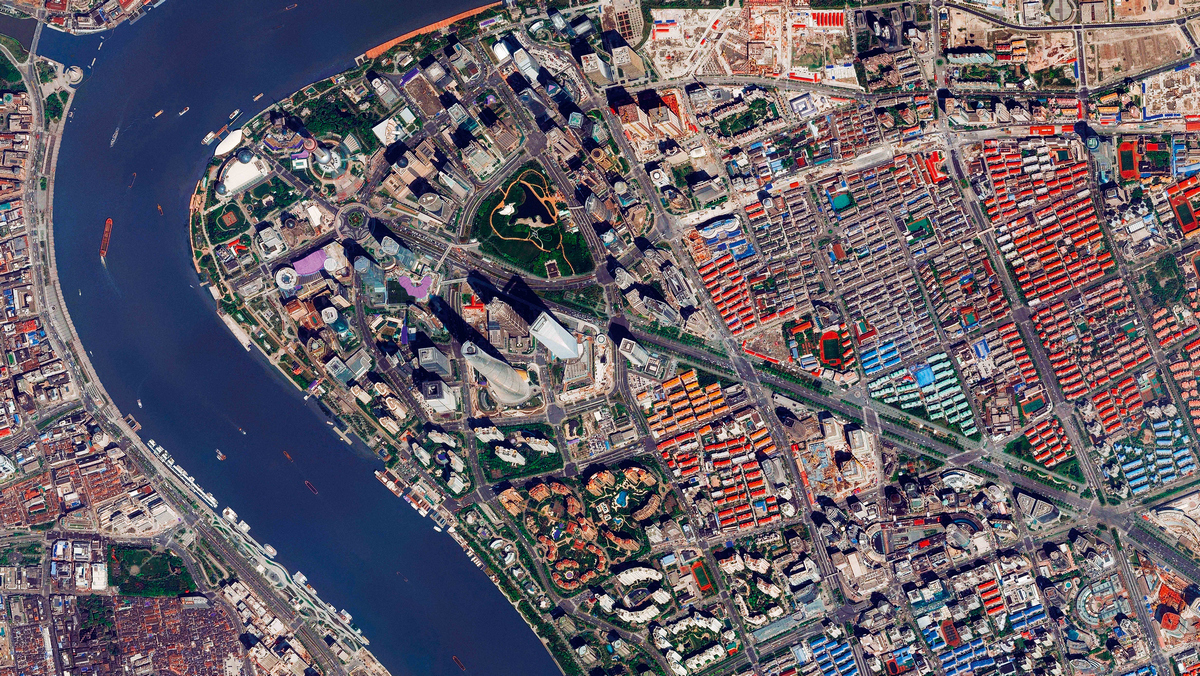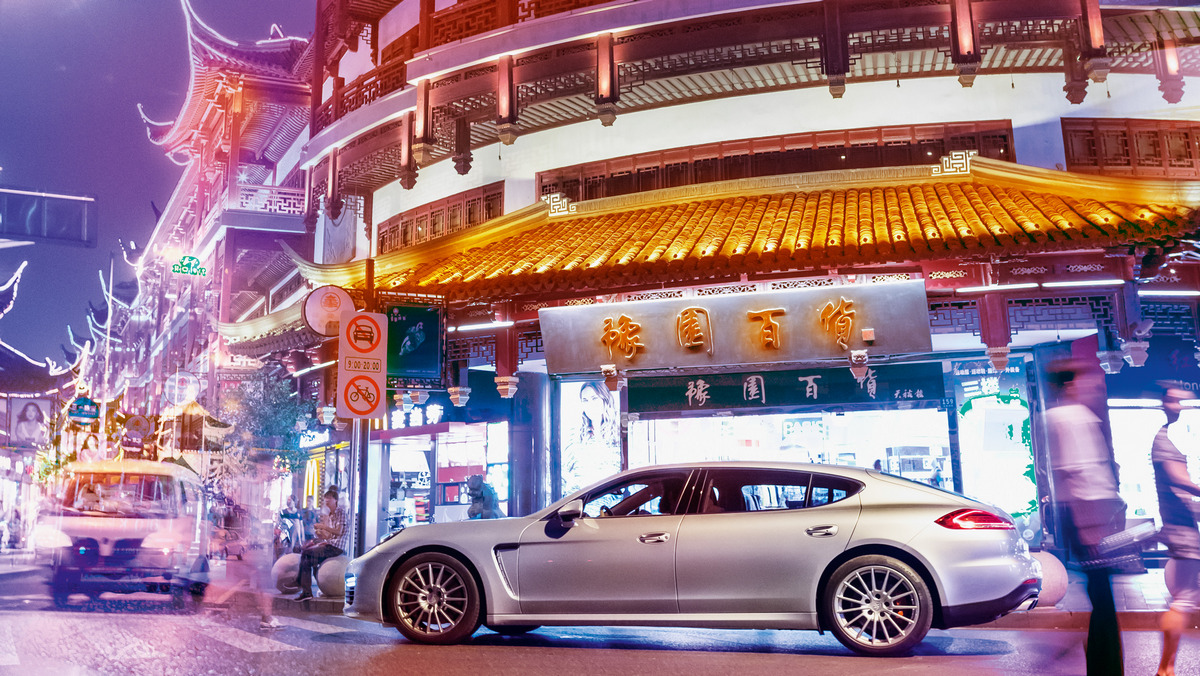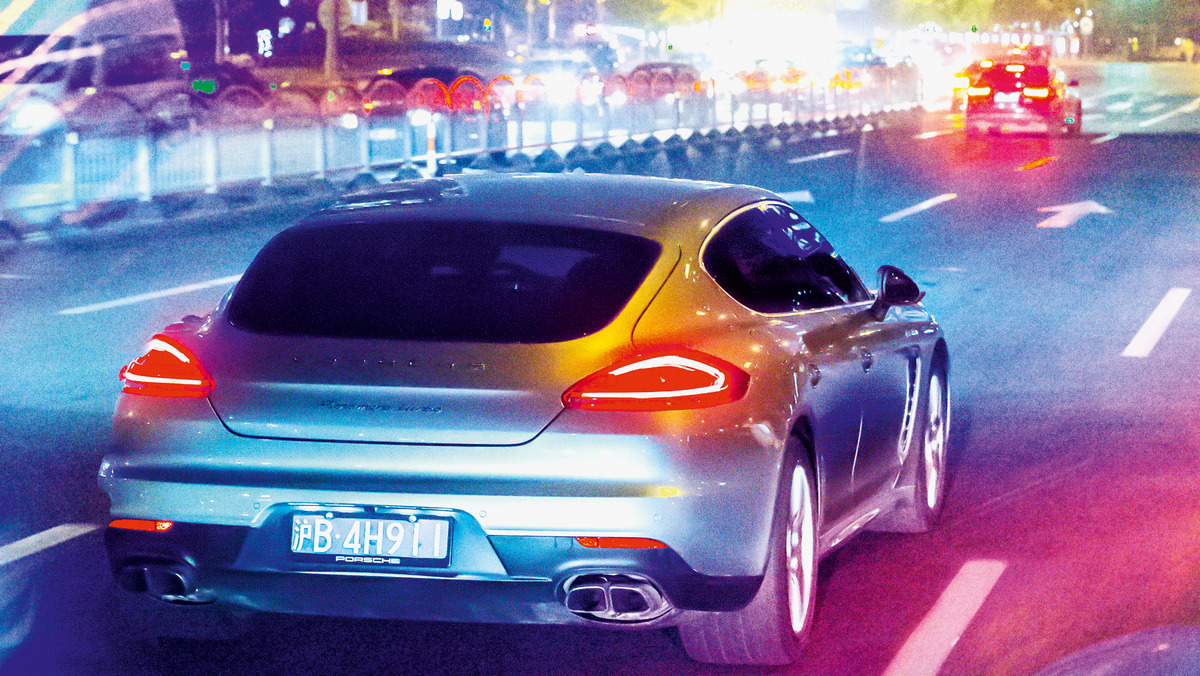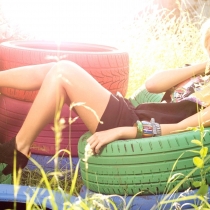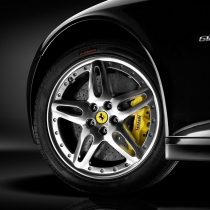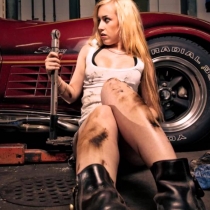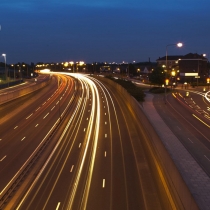The city dazzles, quickens your pulse and sets its sights on the future. Shanghai blends tradition with modernity, perfectly suited for the Panamera Turbo Executive: the sports car that doubles as a chauffeured limousine.
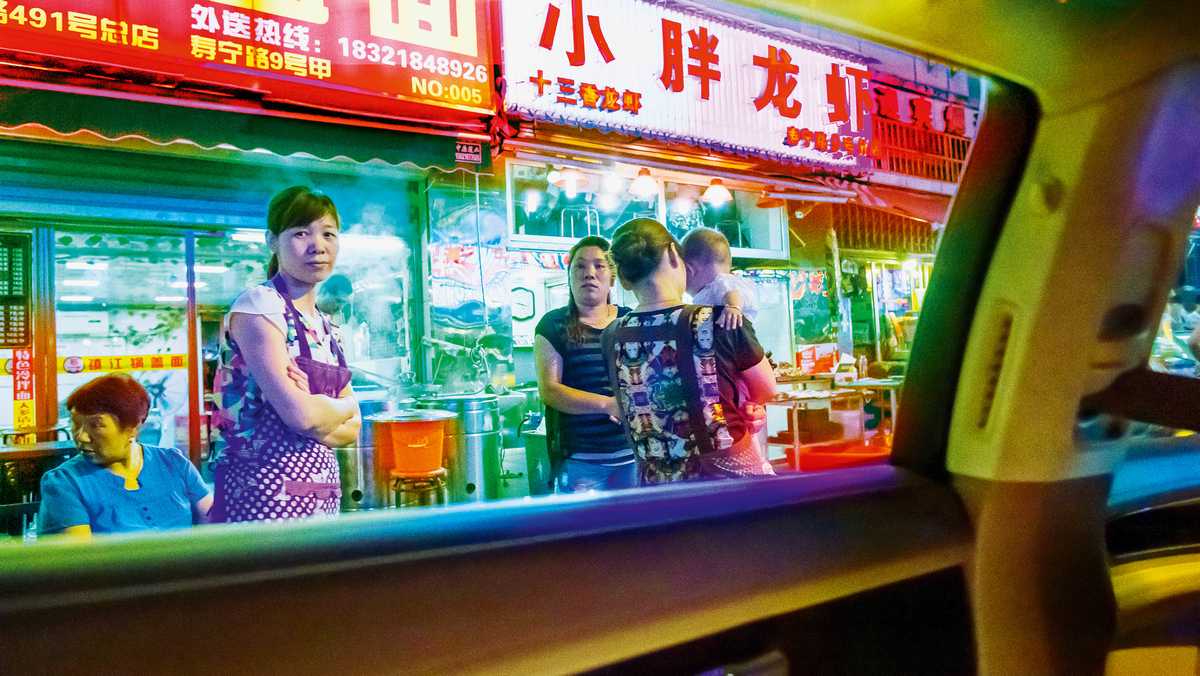
People in Shanghai, fact-finding tour with the Panamera Turbo Executive © Dr. Ing. h.c. F. Porsche AG
Shanghai by night may well be Asia’s most exhilarating metropolis, a city of magic. A journey of marvels through this megacity. A gentle sea breeze disperses the oppressive heat of the day. The cacophony of horns falls silent, the streets empty as rush hour ends. The avenues of the French Quarter have an air of enchantment. Now the evening extravaganza begins: long blue beams of light illuminate the city beltways. Along the Bund—the large waterfront area—thousands of lights on some of Asia’s tallest towers are reflected in the water. And every lane is lit up as well: with neon signs advertising everything from restaurants and karaoke bars to massage parlors, in every conceivable color.
On a freeway headed to north
Our excursion begins in Pudong, the district on the east bank of the Huangpu. It is 7 p.m., the sun has just set, and we’re on a freeway headed north to Lujiazui, the business and financial heart of the city. Wang, our chauffeur, knows both which roads to take and—during rush hour—which roads to avoid. His comment on Shanghai’s chronic traffic congestion: “Too many cars!”
But traffic is still flowing. Lights and vehicles stream by silently; thanks to the noise- and thermal-insulated glass on the Panamera Turbo Executive, the sounds of the city are muted. One advantage of the 15-centimeter-longer wheelbase is legroom in the rear. It seems endless, while outside the road is becoming increasingly crowded. As we reach Lujiazui, traffic grinds to a halt. This is the site of the famous, futuristic Oriental Pearl Tower (468 meters) with its purple-patterned spheres. The Jin Mao Tower (421 meters) stands right behind it, as do the 492-meter-high Shanghai World Financial Center (nicknamed the “bottle opener” in a nod to the rectangular hole at the top), and the newly completed Shanghai Tower, which is China’s tallest building and the third-tallest worldwide, measuring 632 meters.
World premiere in 2009
Wang points toward the Shanghai World Financial Center. “That’s where the Panamera celebrated its world premiere back in 2009—on the 94th floor! They got it up there by standing it upright in the elevator.” Shanghai is a great place for the Panamera; two years ago Porsche introduced the second generation here as well.
Some thirty years ago, when China first began to open up, you would have seen nothing here apart from a few apartment buildings and rice paddies. Today the skyline is one of the world’s best-known photographic subjects—and China has become the world’s second-largest economy. Most international companies now have their offices in Lujiazui. Many expatriates live on this side of the river in order to be closer to the airport and to the city’s international schools. But, like the majority of commuters, we are now headed to the opposite shore and into the old town. As we approach the entrance to the Yan’An Dong Lu Tunnel, it appears walking may be faster than driving.
On the other side of the river
Wang decides it’s time for a detour: we continue to head north and then enter the less frequented Xinjian Lu Tunnel. When we emerge on the other side of the river, we find ourselves in a more anonymous part of town. There’s not much that catches the eye other than housing blocks and small shops.
Shanghai from above
In 2012, a new milestone was reached: for the first time in China’s history, half of the population lives in cities. It is a milestone amounting to the greatest urbanization process in world history. People are moving from rural areas to the city in search of work. This process is regulated by the government. Slums such as those found in Africa or Latin America are rare. Instead, blocks and blocks of concrete apartment complexes with twenty, thirty, or forty floors are common. Many Chinese cities have lost their character and are hardly distinguishable from one another. Shanghai has been fortunate, however, and has retained a relatively large number of its original buildings. The population has doubled over the last twenty years, to around 23 million.
Forty-three-year-old Wang is one of those new residents. He was born north of Shanghai, in Jiangsu Province, where his family still resides. “I earn much more here than I would in the country,” says Wang, who is saving part of his income to purchase an apartment in his hometown.
Western powers
We cross Suzhou Creek, a tributary of the Huangpu. The Bund begins here, the area around the riverwalk that was once the center of international concessions, which were controlled by Western powers. And where merchant ships sailing under British, French, Russian, German, and Japanese flags once docked. From the roof of Shanghai’s oldest hotel, the Peace Hotel, and from the terrace of the Bar Rouge nightclub, nouveaux riches Chinese and foreigners mingle and marvel at the spectacular display on the other side of the river. You can see the past and the future in their eyes as they watch the light show, which is held every evening on the facades of the skyscrapers until 11 p.m.
But we want to keep moving, to the French Quarter: the most beautiful part of Shanghai. Wang avoids the narrow lanes of the old town, which begins just behind the Bund. The Panamera rolls majestically toward its destination. Its V8 emits discreet reminders of its 382 kW (520 hp). Our thoughts wander briefly to visions of the open road, of switching places with Wang…
Shanghai like thirty years ago
Back to reality: steam rises from round bamboo steamers filled with baozi, a type of steamed bun. Along the street, noodles sizzle in woks, men peel durians. E-bike riders squeeze their way through the thicket. This must be what Shanghai was like thirty years ago. The houses are built close to one another. Life, by and large, takes place outside.
A quick stop in front of an illuminated building near the famous Yuyuan Garden.
By 2010, there were already 3.1 million vehicles on the road in Shanghai, and that figure continues to rise in a country where cars are still prized as status symbols—German cars are particularly popular. The city is now restricting the number of new registrations: applicants must enter a lottery and pay 80,000 yuan (around 12,000 euros) for license plates. Wang tells us about a cousin of his who has been waiting five months for a license plate. And drivers must have Shanghai plates if they wish to use main roads during rush hour.
The streets are silent
Traffic finally settles down around 8 p.m. We turn off from the Bund to the right and head west. Halfway to our destination, we make a stop in Xintiandi, a redeveloped district where traditional shikumen houses in Shanghai architectural style have been converted into modern restaurants. We buy a sandwich from a chain that specializes in organic food and caters to Shanghai’s new middle class.
Our journey ends in the French Quarter. The nineteenth-century French influence can still be felt in this part of the city, with its buildings and avenues lined with sycamores, forming a green roof over hundreds of little Shanghai streets. Here the metropolis finds tranquillity. The streets are silent, save for the cicadas chirping in concert.


